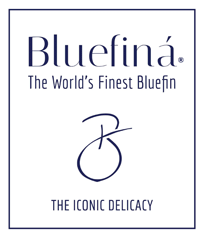The Leading Global Perveyor Of Sustainable, High-Grade Bluefin
Pacific Bluefin Tuna Is Becoming A “Fishery Success Story”
Fishery and tuna scientists worldwide—along with environmental non-governmental organizations (ENGOs) and the commercial fishing industry recognized in 2004-2005 that Bluefin tuna were overfished, and that something needed to be done. There was a concerted effort by fisheries scientists, NGOs, and the commercial fishing industry to protect and control this majestic and most valuable of the tuna species. 70% reductions in capture quotas, 100% traceability and observer coverage, stringent procedures for capture, verification of tonnage, and more, were implemented over the following years.
Fast forward 16 years to 2021, these measures have resulted in the miraculous recovery of the wild stocks of Bluefin tuna worldwide, especially pacific bluefin, to the point where here in the Eastern Pacific off the coast of Mexico and California, wild Bluefin populations and Bluefin tuna fishing is climbing back to near levels it was back in the 1960s and ’70s—quantities and increasing size classes of Bluefin tuna in our waters hasn’t been this promising for 40-50 years!
Bluefiná’s Role In The Sustainability Of Bluefin
RESEARCH SHOWS PACIFIC BLUEFIN
POPULATIONS ARE INCREASING.
Scientific Data Show Positive Projections.
Promising 2022 Assessments
According to the INTER-AMERICAN TROPICAL TUNA COMMISSION’s “Stock Assessment of Pacific Bluefin Tuna 2020” report, pacific bluefin are on a trajectory for increasing populations beyond rebuilding targets. As quoted from this report, “… the probability and the year expected to achieve the initial rebuilding target are more optimistic than the projections resulting from the 2018 assessment. This is due to larger numbers of immature pacific bluefin contributing to a more rapid growth of populations by 2022. After 2022, growth of the population is expected to improve due to the low recruitments assumed for 2019-2020. After 2025, the population would grow again due to projections.
Bluefiná Supports Bluefin Conservation
Bluefiná fights to encourage strict harvest levels that end overfishing and rebuild the bluefin populations. Not only does Bluefiná adhere to international quotas, Blueiná funds grants to study and save this majestic creature.

Comparisons of various projection result for Pacific bluefin tuna (Thunnus orientalis) obtained from bias-adjusted bootstrap projection results. Median of scenarios 1 to 6 (solid lines) and their 90% confidence intervals (dotted lines).

Total biomass (ton) by age of Pacific bluefin tuna (Thunnus Orientalis) estimated from the base-case model(1952-2018)
Charts above are from the “STOCK ASSESSMENT OF PACIFIC BLUEFIN TUNA IN THE PACIFIC OCEAN IN 2020” report. ~ INTER-AMERICAN TROPICAL TUNA COMMISSION SCIENTIFIC ADVISORY COMMITTEE.

The pristine Coronado Islands off the coast of Mexico and the USA. This is where Bluefiná raises bluefin for the export to US markets and the world.
PERFECTING TRACEABILITY TECHNIQUES
FOR A FLOURISHING TOMORROW.
From Ocean To Table — Tracing Your Food Source.
At Bluefiná we use the latest technologies to track where the fish have come from and where they are along the supply chain.
HOW WE TRACK OUR BLUEFIN
At Bluefiná our goal is to lead the way in bluefin traceability. We count each and every fish using the latest underwater electronic technologies. Once the tuna is ready for market, we tag it with UPC codes and tracking numbers so we can store information in our database on where the tuna is going, when it is leaving the farm, where it is in the supply chain, its weight, size, and age, and in many cases what restaurants it might end up in.


WE’RE COMMITED TO SUSTAINABLE PRACTICES TODAY…
TO ENSURE AN ABUNDANT FUTURE TOMORROW.
Upholding The Highest Ethical Standards For Sustainable Fishing.

Pacific Bluefin In Pristine Waters Near The Coronado Islands

Feeding A Natural Diet

Bluefiná Diver In The Midst Of A School
Although Pacific bluefin tuna have been a commercially important fish species in Japan for many years, markets are expanding in the United States, Europe, and other parts of Asia. For over 20 years Bluefiná and Baja Aqua Farms have been supplying these markets through the careful raising of bluefin off the pristine waters of the Coronado Islands. The clean waters, temperate weather conditions, abundant supply of sardine for feeding, and proximity to the Los Angeles International Airport, have made this location ideal for suppling the American and Asian markets in particular.
MIGRATION & CONSERVATION
At the beginning of the catch season we journey out hundreds of miles to selectively catch wild pacific bluefin on their migratory path up the pacific coast. We understand our catch and size limits, and we also understand what we need to leave behind to give this species a chance to complete its migration back into Japanese waters, so that it can begin the reproduction cycle again.
YIELDS & CONSERVATION
In 2020 and 2021 we concluded the bluefin tuna fishing seasons without reaching the catch limit provided to us. As a control measure to ensure strict compliance with international catch limits, The National Aquaculture and Fisheries Commission (Conapesca) implements a preventive technical stop at 80 percent of the catches, in order to avoid the risk of an overflow of the quota. Each year our fishing vessels has a federal fishing officer onboard to assist and ensure a legal limit.
These observation and verification actions coordinated with the tuna industry off the Eastern Pacific Ocean, have contributed to the orderly and sustainable use of our tuna resources. We continue to commit to the guidelines of the IATTC, and to go a step further by reducing our own quotas to set an example for other tuna fisheries to follow.
WE ARE PROUD TO WORK WITH SCIENTISTS
TO FACILITATE BLUFIN RESEARCH.
Through Collaboration And Grants We Are Understanding More About Bluefin.
Each and every year we understand more about bluefin behavior through science and technology. We believe that to be able to continue enjoying this delicacy, we must first help to increase bluefin population levels to the point that outpaces the amount we take from the ocean. We understand that this has to be a global effort across continents, and our capacity to influence these standards will mostly lay in our efforts to collaborate with scientists.
Scientists can produce convincing data that is reviewed by international organizations without bias. Therefore, supporting scientists through grants, tag-and-release programs, and other partnership endeavours can help produce data that influences other fisheries to be more responsible with their conservation of bluefin.
Consumer demand for bluefin is growing each year, and we believe one of the ways to slow this demand is to market bluefin tuna as a delicacy and not a commodity. At Bluefiná we believe we must be a positive force for helping scientists and governing organizations monitor and implement restrictions that will ensure growth in these populations.



If You Are A Scientist, Let’s Collaborate.
If you are an organization studying pacific bluefin tuna, we would like to hear from you to see if we can help you in your research. Please contact us through this website to see if we can be of assistance to you and your research. We care about the future and sustainability of bluefin and we would like to collaborate.
We are proud of the efforts we take to further the science of pacific bluefin, and we hope to learn more about how we can better manage our farms, our fishing practices, and any processes that would minimize the threat to overfishing. Lean on us, and we will do our best to support your work.
UTILIZING THE MOST ADVANCED TECHNOLOGIES…
For Monitoring Every Micro Details, From Ocean Water Quality To Fish Behavior.

Using Cutting Edge Technologies For Environmental Efficiency

Scanning the Environment Around the Bluefin
Keeping Bluefin Stress-Free And Healthy.
Some of our technologies include submarine remote-controlled cameras to monitor feeding, fish behavior, inspection of pens and netting. Other technologies allow us to feed multiple groups of bluefin from one centralized location so our vessels don’t have to drive around and waste fuel. Others monitor biotic and abiotic parameters, verifying the quality of the water so that they are optimum for healthy bluefin. In addition, we have scanning technologies that help us track each fish that goes to market so that you know where your food is coming from.
At Bluefiná our quest is to utilize the fewest resources to produce the finest bluefin in the world. The less we use the more environmentally friendly we are. All of these technologies help our bluefin to be as stress-free as possible, producing less acidic, better flavored, melt-in-your-mouth quality.
At Bluefiná we regard bluefin tuna as a delicacy and not a commodity. We believe bluefin are a majestic creature that deserves careful conservation and oversight by international organizations. We are committed to bluefin conservation through strict fisheries management using scientific data, analysis, and efficient technologies. We are advocates for ethical and sustainable aquaculture practices and we are proud to reflect these values throughout our organization. Look for the Bluefiná name — the sustainability brand.


